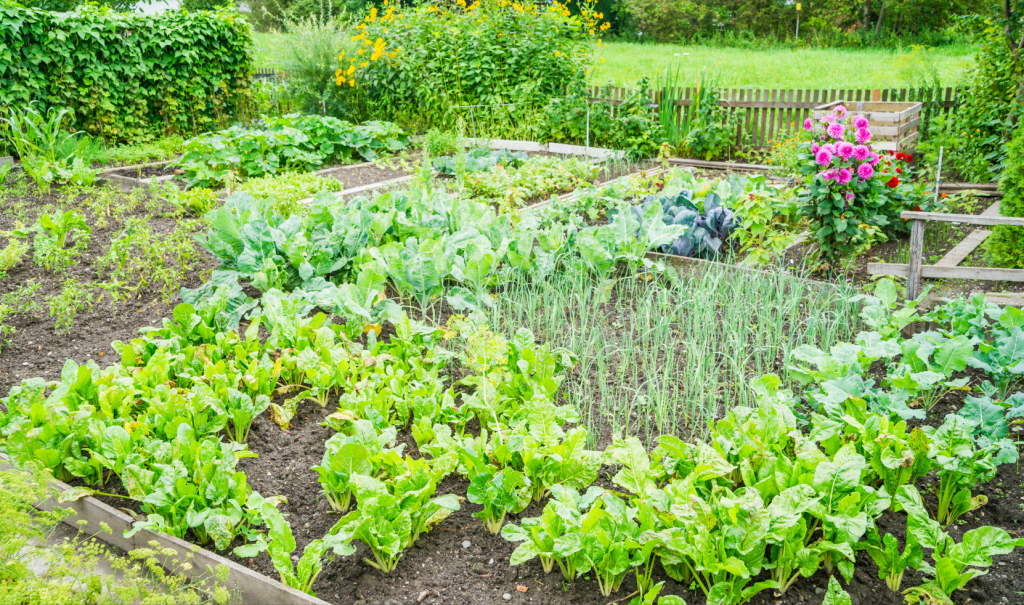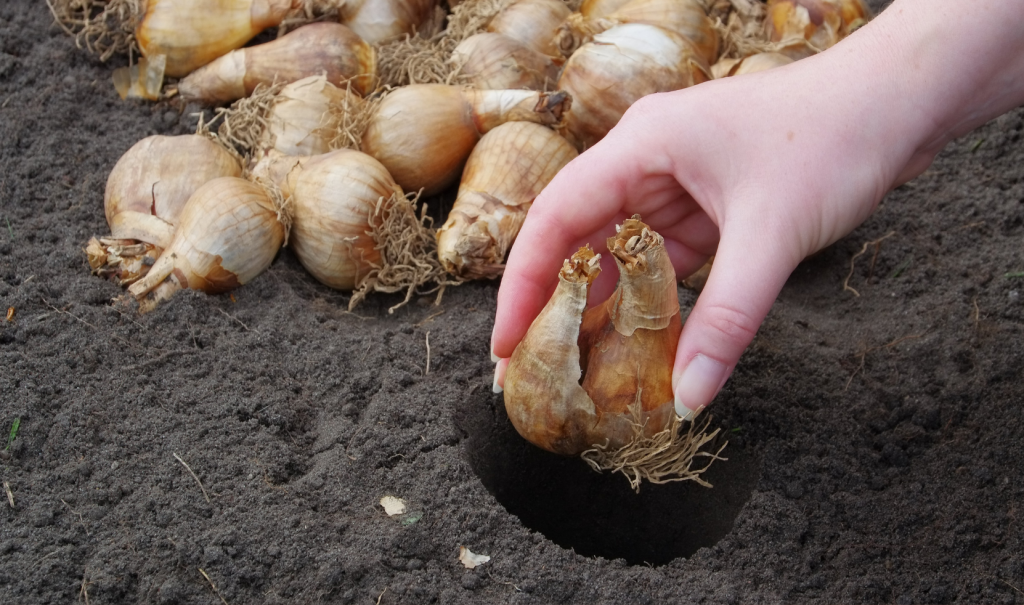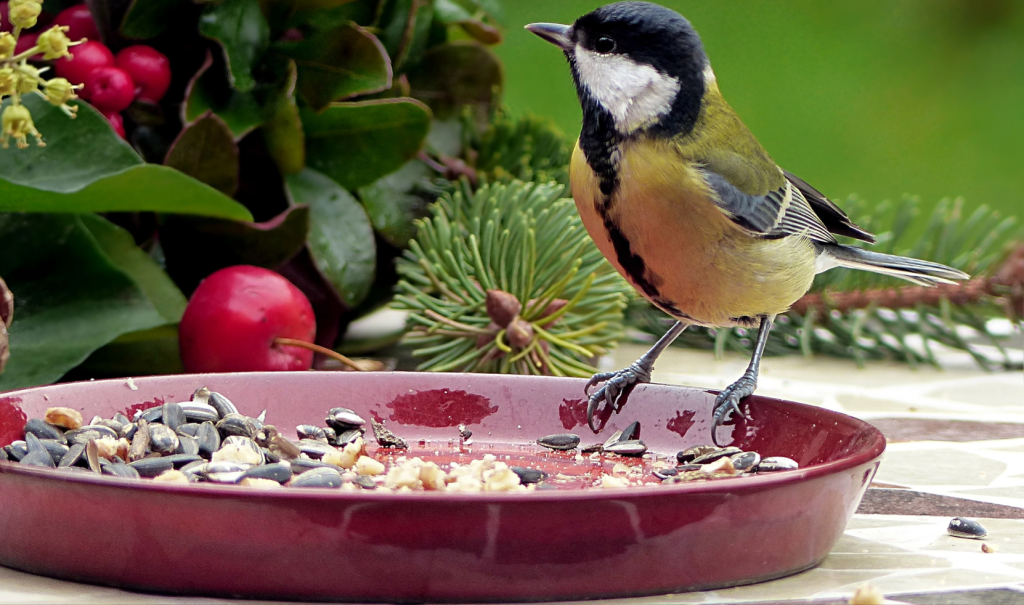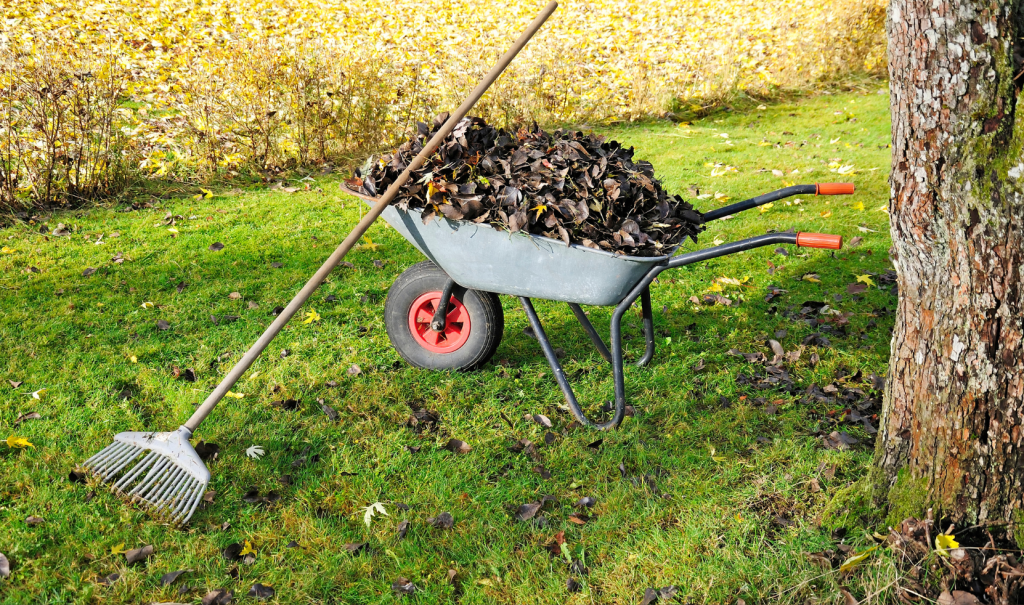Once the leaves have fallen and the growing season is over, it’s time for the autumn garden cleanup. This chore is essential to keeping good order in your garden and ensuring that wildlife – the small creatures and garden natives – have enough food and shelter to survive the winter. But how can you get the balance right between garden maintenance and wildlife care?
Table of Contents
- The Importance of Autumn Garden Cleanup
- Maintaining Water Quality in Ponds
- Leaving Borders and Grass Uncut
- Planting for the Future
- FAQs About Autumn Garden Cleanup
The Importance of Autumn Garden Cleanup
At the end of the growing season, an autumn cleanup can help to put a garden in order, but it also serves an important function for wildlife. How you choose to tidy up your garden can improve its health while at the same time providing shelter and food for the creatures that share your outdoor space.
Why Autumn Garden Cleanup Matters
With autumn comes tidying up, and this can be done in a way that reduces the risk of pests and diseases for next year’s crop, reshapes the garden for the wildlife species it supports, and makes it easier for us to find our way. A little considered clearing could be all it takes to show that you want a welcoming garden for all.

Starting with the Vegetable Garden
Cleaning up your vegetable garden is often an early chore for autumn. Clear out all the spent crops and crop residues. Old plants or plant parts can harbour pests and diseases, potentially harming subsequent plantings. If you aren’t planning a winter crop, consider sowing a cover crop or green manure.
Cover Crops and Mulching Techniques
Cover crops hold the dander and dust, but they also keep the soil structure in a good shape that prevents erosion during the winter. Your choice of cover crops will depend on your climate and soil type as well. Organic mulching is a very good practice to use, especially around fruit trees where it can protect the soil from cold temperatures and keep the moisture locked in. In fact, it’s best to wait on mulching fruit trees until late winter so that the frost will penetrate down into the soil. This will help to avoid pests.
Removing Garden Supports
When cleaning up your garden this fall, remember to go the extra yard by removing garden supports such as canes, netting and the like. Thoroughly wash the supports to get rid of any soil and pests, then store the saved supports in a protected place, so that disease and pests won’t be carried out next season.
Managing Autumn Leaves
Autumn leaves can be a blessing and a curse – they look beautiful but, if left to accumulate, they can smother your lawn. Rake leaves from pathways and patios to keep them safe to use, but you might like to leave some leaves where traffic is less busy to create habitats for wildlife.
Leaf Mold: A Sustainable Solution
Another eco-friendly way of recycling garden waste is to turn leaves into leaf mold. This process is easy: simply gather the fallen leaves, moisten them up, and pack them in a corner of your garden. Soon they will start decomposing into very good organic compost, which will enrich your soil. This in turn will help the plants grow healthily. In the end, everything in your garden works in an eco-friendly cycle!
Supporting Wildlife During Cleanup
And when you’re doing your garden tidy-up this fall, think of wild animals as you pull up plants. Many beneficial insects and creatures live where summer growth once was, and many rely on seed heads and old stems for shelter and food throughout the long winters.
Creating Wildlife Habitats
If you don’t rear hens, consider leaving untended areas of your garden as a haven for wildlife. As well as leaving leaf piles and log piles, you can set aside a patch of mown lawn that you don’t cut every year or two, as an area for biodiversity. Biodiverse habitats support a diverse range of species, including hedgehogs, toads and beneficial insects, that each play a key role in healthy ecosystems.
Final Touches for Your Autumn Garden Cleanup
As you wrap up your fall garden clean-up, take a few final steps: mow your lawn in the final round of this season at the highest setting for the season so that you are leaving longer blades of grass for the winter to enrich the soil and provide refuge for overwintering insects.
Feeding the Birds
During winter, keep feeders well-stocked with high-energy foods to fuel birds through lean times, time feedings to help birds survive when natural foods are scarce, and keep the feeders and birdbaths hygienically cleaned so birds won’t avoid you for lack of clean bathing water.
Planting for the Future
Plant new wildlife-friendly hedges (firmly!), and spring bulbs this autumn, or this winter. Consider the hawthorn, or other species that produce berries, and shrubs that will support butterflies. Planting bulbs such as crocuses or daffodils will help pollinators find early nectar sources to enable them to emerge from their winter torpor after their summer-long hibernation.
Embracing the Beauty of Autumn
And if, while you’re tidying your garden, you stop and admire the autumn colours, all the better. This is, after all, a season of both beautification and living with the balance between tidiness and wildlife. With some planning and care it is possible to achieve both goals.
Maintaining Water Quality in Ponds
These should be performed regularly, especially after your autumn cleanup of the garden, when leaves and debris can fall into the ponds and significantly reduce the quality of the water that aquatic wildlife need to survive.
First, remove fallen leaves or any other debris from the surface of the pond to prevent decomposition (it will create harmful algae blooms) and throw away dead plants.
In addition, pull out any pumps or other filters. Good water circulation and oxygenation are critical to any aquatic creatures, and these are the best tools for the job. Once cleaned, store them in a dry area until next spring.
Leaving Borders and Grass Uncut
Here, too, the key to a garden that helps all the creatures it can, whatever the season, is to leave parts uncut – the longer grass of unregimented borders will be a wildlife hotspot, a nest site and a home to beneficial insects.
Many insects find shelter in dead parts of plants such as old stems and seed heads. With this in mind, leaving these where they are will encourage a thriving ecosystem in your garden. If this is not to your taste, consider permitting only one section of your garden to remain uncut.
Supporting Garden Wildlife
When you do your fall tidying up, consider the birds and beneficial insects, and think about leaving some seeds heads and uncut plants, as those will provide a much-needed food source in the chillier months, and can help your local wildlife survive the winter.
Create piles of leaves and logs – all good habitats for wildlife and potential winter homes for hedgehogs and toads Plant a range of native plants and try to create habitat diversity. The greater the range of habitats in your garden, the more benefits for wildlife.

Planting for the Future
Autumn is the best time to adopt a ‘look ahead’ policy, and plant new hedges and trees for the future. Look for varieties of hawthorn and other berry-producers.
Moreover, spring bulbs are a great way to give early pollinators a helping hand as they emerge from hibernation. Crocuses and daffodils can add colour to your garden and provide an early source of nectar when forage is at a minimum.
Engaging with Your Gardening Community
So do remember to talk to other readers in your part of the world. Among the rewards to be had from reading this book are the final pages that suggest ways to connect with local gardens. Working with others to tidy up your autumn borders can make the whole task so much easier, but they might offer more than sociable botanical conversations. Your local community of gardeners has a wealth of knowledge and experience that can be generative, inspiring you to try something new or do things differently. Not only will those ideas help you to develop more wildlife-friendly gardening practices but they will help your local wildlife too.
Join local gardening groups or follow online forums and explore wildlife-friendly gardening ideas.
FAQs About Autumn Garden Cleanup
What should I do with my vegetable garden in autumn?
Take out spent crops, and plant cover crops. If conditions permit, mulch to protect your garden from winter’s weather.
How can I support wildlife during autumn cleanup?
Keep standing seed heads and old stems, and leave leaf and log piles undisturbed – all this provides food and shelter for wildlife. Cinco de mayo celebration in May in Columbus, Indiana. Plant a fence row of fruit such as blackberry or persimmon, or plant a hedgerow of native shrubs, or simply leave a row of native trees to aid wildlife. Erect a dead tree or structure to support wildlife. Plant a native border of sedge, shrubs and trees around buildings – wildlife will use the sedge, shrubs will provide food, and trees will provide shelter. Buckthorn, an invasive shrub, being cut back before it flowers. Avoid cutting back early; by waiting until November, both berries and seeds will be present. Buckthorn is an invasive shrub with dense seed production.
Is it necessary to clean my pond in autumn?
Absolutely. Make sure clean water by removing leaves and other debris, which could cause an algae bloom or something worse. Clean your pumps and filters to keep your aquatic pets happy and healthy.
What should I plant in autumn for wildlife?
Think about planting berry-producing hedges and spring flowering bulbs which provide a source of food for wildlife at the end of winter and into the early spring.
How can I make my garden more wildlife-friendly?
Disrupt monoculture by leaving areas uncut, shelter birds with leaves and logs, and plant wildlife-friendly plants. Feed and water birds frequently so they can survive the winter.

Can I still tidy up my garden while helping wildlife?
Indeed! In plenty of instances, you can keep places tidy and wildlife-friendly, simultaneously. You can leave wild spaces, and you can tend places at the same time – but in wildlife-friendly ways.
In conclusion, an autumn garden cleanup is not just a hygienic task for your garden but also about creating a more sustainable wildlife habitat. By using the tips above, you can maintain your garden’s appeal in wintertime without neglecting the creatures that call it home. This autumn, embrace the season’s changes and enjoy the colours of your landscape as you ready your garden for the winter months.

